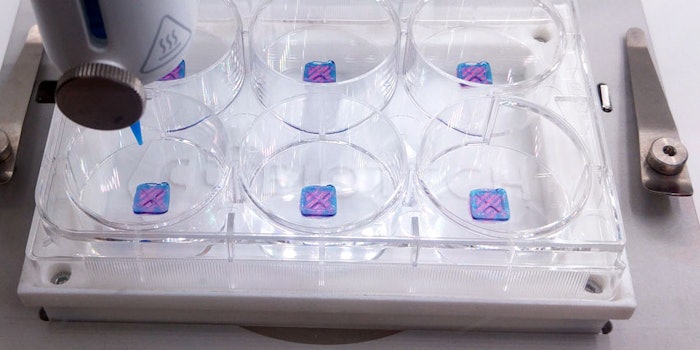
Macrophages are a part of the body's immune system and monitor the microenvironment for indications of cellular stress, injury or infection. Inventors of a new 3D bioprinted skin substrate have implemented their important biological function into a synthetic test setting.
BASF and CTIBiotech jointly developed the skin substrate to support the research and development of anti-inflammatory active ingredients. According to BASF, CTIBiotech’s 3D bioprinting technology expanded its 3D bioprinted skin model portfolio, which will provide a powerful platform for skin care researchers interested in the function of macrophages in a fully reconstructed skin. Macrophages are essential to close wounds and to fully regenerate tissue. They have a high degree of plasticity to promote or suppress inflammation.
“Compared to current in vitro methods, the 3D immune bioprinted skin developed with CTIBiotech will allow analysis more in line with human physiology and the immune role of macrophages,” said Sébastien Cadau, Ph.D., 3D tissue engineering specialist at BASF in Lyon, France. “That’s how the technology is going to help us accelerate the development of innovative and highly reliable ingredients for the skin care market. Our understanding of an immunocompetent 3D skin provides the basis for developing and testing advanced cosmetic bioactives for skin care applications.”
BASF and CTIBiotech initiated this cooperation as early as 2011. In 2015, they began working on 3D tissue models for the development and testing of bioactives for skin care applications. In 2018, they announced the first results, including: the ex vivo production of physiological sebum in a long-term culture of a 3D human sebaceous gland model; and the regulation of this sebum production by means of active ingredients.










